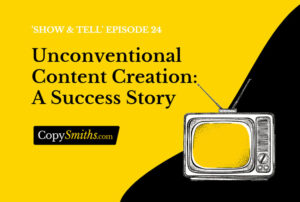Home » Blog » Rev-Up Your Content Creation: Use This Blog Post Outline Template

Rev-Up Your Content Creation: Use This Blog Post Outline Template
Whether you’re creating blog posts, pillar pages or video scripts, you need outlines to make it happen. Faster and better.
Balancing between your KPIs and your team’s productivity is like walking on thin ice.
Yet, by planning your content ahead, you’re allowing a piece of content to morph into an engaging medium. While this also allows you to apply a sustainable content marketing strategy to every piece of content you make.
So, if you want to create an impact with your content don’t forget to write outlines. Think about the big idea, the end goal, and search intent early on in the outlining phase. It makes a huge difference!
The tips below (along with the blog post outline template at the end of the page) will help you up your game.
How Can Writing Outlines Rev-Up Your Content Creation?
Writing an outline might sound like a time-waster. Yet, the truth is on the opposite end.
Mapping out your thoughts before committing to your draft will put you in control. Because, when you come up with your points and break them down, this will give you a sense of direction.
And the sense of direction, in turn, will fast-track your writing.
Outlining your blog post helps you save time in more than one way:
- You avoid the unfortunate event of your research taking you down the rabbit hole. And this gets worse when you’re pressed for time but you’re stuck researching a tangential topic.
- You can keep certain ideas in play, without committing to them fully. This saves you plenty of time you’d otherwise spend on endless rewrites.
- A fully-developed outline allows you to hop from one section to another. It’s a great way to self-motivate yourself without taking away from other sections.
How to Write Outlines that Will Save You a Ton of Time?
Every content creator needs to scale content so the workload is manageable. Try doing this by getting your team to write outlines. It’s a great way to kick your content production up a notch.
And saves everyone’s valuable time.
Now, here’s how to write blog post outlines that will do just that.
Know Why You’re Writing a Blog Post and Who You’re Writing It For
Before even thinking about writing a blog post, think about its purpose. After you’ve considered it, you can abandon the idea of outlining if that suits you better. But, by no means, don’t skip this step.
Define the end goal for your article, then keep it in mind during your writing and pre-writing stages. Express it in your final CTAs.
That’s the only surefire way you’ll be able to deliver on the promise you gave to your readers. And the only way your article can hit your inbound marketing goals.
Every piece of content on the web has some kind of intent in the background.
It’s either to convert your visitors into buyers, to get them to sign up for your email list or to get them engaged with your brand.
That’s why you need to come up with content that resonates with your audience. Otherwise, why would they even care?
Here are three important concepts to help you do this:
- Target Audience. It’s an audience interested in your niche. People looking into your industry to solve a specific pain point. Keep them in mind right from the outlining phase through to your final CTA. Your content is successful to the extent that it ticks the right boxes of your target audience.
- Big Idea. It’s the main idea for your article. It contains the main takeaway people will get after reading the article.
- Search Intent. Search intent is the intention behind each Google query searchers make. Once you uncover what it is, you’ll be able to create unique content people can’t find anywhere else.
Come Up With Your Major Topics and Flesh Them Out With Supporting Details
When you’re writing content for a client, nothing can slow you down more than not having anything to hold on to. Writing a blog post without an outline is akin to getting through a work week without a strategy.
It may work out fine, but you risk it turning into a complete disaster. It’s best having at least some sort of a plan.
So, start by clarifying your major topics, then brainstorm on ways to support those ideas. Create a structure of main and supporting points. Then make a few final tweaks to take your content where you want it to be.
Doing so will keep you from creating thin content. You’ll be able to immediately spot if your points are useful and valid.
Add Credibility to Your Writing by Including Authority Sources
There are plenty of strategies that can help set your content apart from competitors.
One of them is to add credibility and authority to your content. Below are a few special ingredients you need to do this.
Flavor your articles with:
- Authority research data from reliable sources
- Quantifiable evidence you’ll use to prove your points
- A unique perspective and industry expertise
Do it while the irons’ hot; while you’re still in the outlining phase. Pick a few relevant authority sources. Then use them to back up your story further along in the writing process.
This makes things much easier. Once you have an article structure, you can come back to your outline later on and drop any interesting data where appropriate.
That’s where you shift from being an average writer to a writer that creates value-added, reader-centric content.
Share This Blog Post Outline Template With Your Content Team
Outlining blog posts help writers save time. And if you’re managing a team of writers, it helps streamline your content production process. You do need to invest some time upfront. But outlining will make the writing process itself less time-intensive.
Now you know how to write a blog post outline, check out our blog post outline template. It will make writing easier each time.
So, make sure you share it with your writing team or your content marketing network.
Title: Put Your Amazing Eye-Grabbing Title Here
Big Idea: What’s the purpose of this post? What will you achieve by writing on this topic?
Target Audience: Who is likely to find this information useful? Other blog writers? Business managers?
Search Intent: What will your reader be typing in their search bar when they come across your post? ‘How to write a great outline for my blog post’, etc.
Keywords: A collection of short phrases intended to trigger SEO recognition. These should be used early in your article as well as in a sub-heading. ‘Writing blog outlines, article outlines, writing an outline’, etc.
Intro:
- Introduce 3-5 points that you’ll be covering in your article. Don’t spread your content too thin. You want enough words to go beyond the surface of your chosen subject.
- You can add a link if you’re going to reference an authority source.
Section 1: Catchy Subtitle That Compliments Your Headline
- A few points about the content of this section
- A link to a product or maybe a reputable source
Section 2:
- Repeat Section 1 with a few bullet points and a relevant source
Section 3:
- Repeat Section 1 with a few bullet points and a relevant source
CTA: Make sure your reader understands this transition. This can be done with a sub-heading or clear segue that signals to the reader that the call to action is coming up.
- Link to the product you’re selling
- Sentence or two on how you will ‘sell’ your product
So, you’re ready to start writing your own outlines and leveling up your content creation! Happy outlining! Enjoy the ride!
CopySmiths
I'm Katrina McKinnon, founder of CopySmiths and Small Revolution. In my 20 years of experience, I have helped online businesses create high-performing content specifically on an eCommerce store's blog. Find me on LinkedIn and Twitter.

CopySmiths offers the best blog writing services for online stores.
If you'd like us to write blog articles for you, click here.
Most Recent
- 3 Bold Questions You Should Ask When Hiring A Content Writer

- 5 Practical Reasons You Should Use a Blog Post Template

- 4 Amazing Benefits of Using a Title Generator for New eCommerce Blogs

- 10 Awesome Bio Examples Your Online Store Blog Should Emulate

- 8 Basic Steps to Successful Content Development Every Time

Podcasts
Got a question?
Ask our friendly team about our article writing services.
Subscribe to CopyZine
Monthly, hand-picked stories of the best in eCommerce Content.




